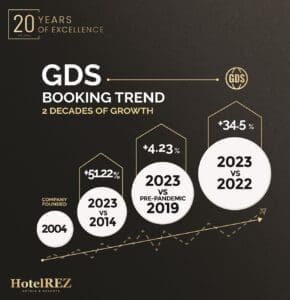
As businesses compete in global markets, they are also simultaneously managing their engagement strategies across continents. It is more than ever that their brand is effectively supported with quality marketing content in the preferred language of their respective target audiences. But when the content in other languages are improperly written, it can be frustrating and costly Ð and could well be the big difference between success and failure for a brand in a particular territory. This is where transcreation comes in.
Translation vs Transcreation
Translation is simply about rewriting source information from one language into another. The final written version in the other language should not only be linguistically correct but also to take into consideration the sequential as well as the factual context of the language of the source information. For branding, publicity or marketing content, these would require more than just being linguistically or factually correct, hence translation alone will not meet its objective.
On the other hand, transcreation, which refers to translations infused with creative writing or simply put creative translation, is aptly applied to deliver that emotional connection with target readers in their everyday language. Because the end product, in addition to being linguistically and factually correct, has also to be creatively adapted to the cultural milieu of their target readers.
Transcreation goes beyond translationÉ
We can apply translation processes to literal information typically in legal, technical or engineering documents. But translation will not work in marketing literature where the content has been creatively written with the use of puns, jargons, emotional expressions, etc. to entice and connect with readers. It is in the same way that localised language versions too have to convey the tone and in a context that is equally emotional, in order to be effectively engaging and inspiring to readers of different cultural backgrounds. The localized branding or marketing messages must appeal as well as encourage a CTA, whilst still maintaining its original direction in a consistent manner.
Transcreation is definitely a right way for global brands to guard against cultural faux pas – all too easy to occur if careful market research has not been undertaken. It is for this reason that transcreation these days is intrinsic to global marketing campaigns.
When messages get lost-in-translation
There are many reasons why the nuance of a marketing message can get lost in a straightforward or literal translation. There are also countless examples where the translation has simply not been properly written. If anything, it is such errors that serve as the clearest reminder of the importance of transcreation. Of course, readers can raise a smile, or it causes a chuckle. Indeed, some mistakes can be laugh-out-loud funny. But, the joke will likely resonate on the brand when such an error occurred. You most certainly won’t be laughing if errors were associated with your brand – and such mistakes can be very costly indeed.
Global fried-chicken giant KFC got off to a sticky start as they opened their first branch in China in the late 80s. Somehow the famous slogan “Finger-Lickin’ Good” was translated into “Eat your fingers off” – a far less appetising tagline!ÊTake HSBC for example, when the bank went global with its US campaign “Assume Nothing.” Unfortunately, in some territories, this was translated to mean “Do Nothing.” All in all and to cut a long story short, HSBC ended up spending $10 million to change its tagline to “The world’s private bank.”
Browse the internet and you’ll find no shortage of funny examples of when translation had gone awry or badly wrong – from the New Zealand restaurant proudly claiming to be “Open seven days a week and weekends too” to the Paris dress shop selling “Dresses for street walking.”
- Translation scope: Technical, Legal, Financial, Engineering, Factual content, etc.
- Transcreation scope: Branding, Marketing, Advertising, Consumer-driven content, etc.
If you are planning onÊgoing globalÊwith your brand or business, and want to connect and engage with your target audiences in their preferred language,Êtranscreation is something you should consider for your global publicity and marketing campaigns, right down to information about your service or product.
To succeed in foreign native language-speaking markets, the branding message of your brand in the right nuances and particularly for its colloquial appeal, need transcreation more than just what translation alone can do.
For more information please visitÊwww.ippworld.com



















